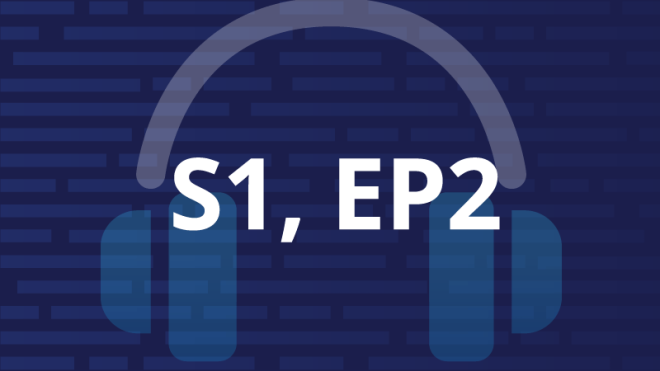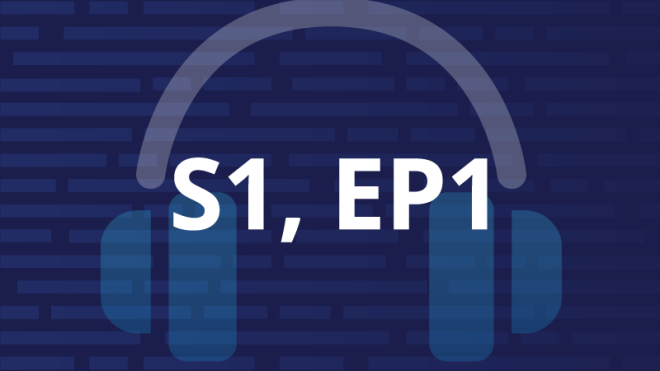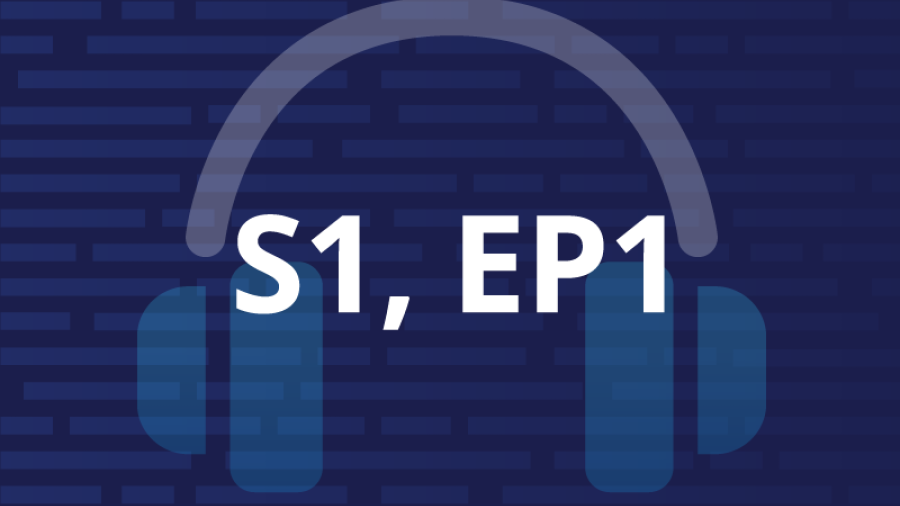The New Ideas from Kaufman Hall podcast series investigates emerging and unexpected trends in healthcare and beyond, featuring Kaufman Hall experts and guests from health systems, academia and related disciplines.
“Consumer demand is going to get shifted around. We don’t want to be left as price takers. We want to lead developing the relationship with healthcare consumers.”
Season 1, Episode 3 - Digital Strategies for Patient Engagement
In the last few years, tech-savvy companies like Doctor on Demand, Teladoc and American Well have begun offering consumers a healthcare experience that’s convenient, affordable, and easily accessible.
For hospitals and health systems, the new digital competition is both an existential challenge to business as usual, and an opportunity to strengthen their relationships with patients through their own innovations.
Sara Vaezy, Chief Digital Strategy Officer for Providence St. Joseph Health, joined the New Ideas podcast recently for a glimpse into the Renton, Washington-based health system’s vision for attracting and engaging consumers through a variety of digital platforms and services.
The conversation also touched on:
- How organizations can target new patients through digital platforms
- Why hospitals need to help consumers find specific physicians and book appointments online
- The system’s future plans for a comprehensive “digital front door”
HOST

Haydn Bush
Haydn Bush has two decades of experience as a journalist and communications professional in healthcare and related fields. He currently serves as vice president in Kaufman Hall’s thought leadership department.
Prior to Kaufman Hall, Haydn worked in various communications roles at the American Hospital Association and McCabe Message Partners, an award-winning public relations firm focused exclusively on health and healthcare.
During his tenure as a writer and editor for Hospitals & Health Networks magazine, Haydn’s reporting on improving care and reducing costs for the patients with the highest healthcare costs received honors from the National Institute for Health Care Management Foundation and American Business Media.
GUEST

Sara Vaezy
Sara Vaezy leads the development of the digital strategy and roadmap, digital partnerships with health systems and technology companies, commercialization and business development, technology evaluation and pilots, and digital thought leadership at Providence St. Joseph Health.
Prior to PSJH, she worked for The Chartis Group, a healthcare management consulting firm, where she focused on enterprise strategic planning, payer-provider partnerships, and the development of population health companies.
Transcription
Haydn Bush: Welcome to New Ideas from Kaufman Hall. I'm Haydn Bush. In the last few years, tech-savvy companies like Doctor On Demand and American Well have begun offering consumers a healthcare experience that's convenient, affordable, and easily-accessible online. For hospitals and health systems, the new digital competition is both an existential challenge to business-as-usual and an opportunity to strengthen their relationships with patients through their own innovations. I recently spoke with Sara Vaezy, Chief Digital Strategy Officer for Providence St. Joseph Health, for a glimpse into the system's vision for attracting and engaging consumers through a variety of digital platforms and services.
Sara Vaezy: [At] Providence, we're a 51-hospital system with almost $25 billion in revenue across the western United States. We care for almost 10 million patients. We have a 1 million life health plan in Oregon. We have a really broad reach, and we cover the entire continuum of care. We have a health plan. We have post-acute, long-term care, and skilled nursing. We do supportive housing. We even do education. We have a high school and a university. Providence really thinks about health as well as healthcare. This trend toward being much more consumer-focused is part of that. I would say we're really looking at a few things fundamentally when it comes to consumerism in healthcare. It's things that folks have talked about for a long time, but we’re starting to crystallize around the notion of using digital to become a more consumer-oriented organization. We have fundamentally two goals. One, we're using digital for purposes of new customer acquisition and new patient acquisition—making sure that our assets are discoverable, they're personalized, and they're driving folks to our system when they need healthcare or health-related things. And then the second piece of it is that we are actually getting folks from disengaged offline to engaged online. And that's really important, because as new entrants come into the market, as you think about all of the consumer-facing tech companies that are coming into healthcare, as there's this massive proliferation of digital in healthcare, basically, what's going to happen is that consumer demand is going to get shifted around. And we don't want to be left as price-takers. We want to actually lead that development of the relationship with healthcare consumers or patients.
As health systems, we become downstream vendors, and there are these new entrants. And, it's not so much a new entrant, but ZoomCare is a company that provides, essentially, immediate care in many of our markets. So they were acquired recently by PeaceHealth, which is another health system in many of our regions. But ZoomCare provides that on-demand healthcare model. A lot of folks are familiar with American Well or Teladoc. These are the direct-to-consumer virtual visit companies that provide a visit similar to facetime with a provider. Part of the issue is that, yes, folks go to these new places, and then health systems are left with just the hospital activity, or the things that only we can do that is relatively difficult from a margin standpoint, from an economic standpoint. The other piece of it is they may still come to us for certain things, but we're at the mercy of those who are shifting demand around.
I'll give you an example. The consumer-facing tech companies are likely not going to get into care delivery themselves. That's not really their sweet spot. But what they do like within other industries, they shift demand around. So, for instance, the way that Google surfaces up search results is a way of shifting demand around, right? And there are ways to work with those algorithms to ensure that you can be at the top of that Google search result, for instance. The same thing can happen with healthcare. So how providers are discoverable on Google, for instance, is a way of shifting consumer demand around. And that's the other piece of all this that we're controlling for, which is both we don't want to just be downstream vendors or price takers, and we want to ensure that we have a more significant role in terms of where consumers choose to get their care.
Bush: Vaezy told me Providence St. Joseph's digital platform is designed to engage healthcare consumers in two main online activities—finding information on a specific primary care physician or specialist or booking same-day care appointments for more immediate needs.
Vaezy: Everyone has at some point gone online and said, "Oh, what does this headache mean?" Or you're just looking for information. That's one aspect, and it's really more of an information-seeking activity. Then there's the activities around actually being ready to transact or do something, right? There's some sort of action that you want to take. And for the majority of patients, especially those who are new customers, those two things fall into two buckets. They're either looking for a specific provider, so maybe you've moved recently to a new market and you don't have a primary care provider, so you're looking for a provider, or you're looking for a specialist that maybe is a dermatologist. You're looking for somebody who specifically meets some characteristics, and you're looking for a very specific provider. Or you need care now for whatever reason. Maybe you have the flu or you woke up in the morning with a terrible sore throat. So that's this whole notion of seeking same-day on-demand care. And with respect to each of those components, Providence [has] strategies around each of those areas, both on the information-seeking side which is largely content-focused as well as on the transactional side.
So, on the searching-for-a-provider side, we've worked with a company called Kyruus which does provider search match, provider data management, basically making sure that our inventory is accurate, available, presented to the customer in the right way so that they can make decisions about the care that they're seeking. And on the-same-day side, we actually incubated our own platform that provides same-day care in various venues as well as, for instance, a retail clinic, urgent care, even a primary care clinic as well as different modalities. So, in-person, virtual, that kind of thing. We built our own platform in that regard to enable our patients to get same-day care.
Bush: Visitors to one of Providence St. Joseph's Express Care websites are greeted by Grace, a chatbot that helps them connect with the healthcare services they need.
Vaezy: On the one hand, we're providing better access. On the other hand, we've introduced new forms of access that patients may not be familiar with and they're wondering, "Well, what is this virtual visit thing? I'm presented with all these options. Frankly, I'm confused." And so we've applied our chatbot. The first iteration of it was our own build, and it's a chatbot that we called Grace, and she sits on the website that is specifically for same-day care. Our same-day care offering is branded as Express Care, so she sits on the Express Care website. And when a patient visits the Express Care website, Grace will pop up and say, "Is there anything I can help you with?" It's very similar to chatbots that exist in other industries that may pop up. For instance, Bank of America has Erica. She's the virtual assistant. The vast majority of websites now have that chat bot that says, "How could I help you?" That's what Grace does. She provides non-clinical navigation to the right side of care based on, essentially, what the patient will say, like "I have the flu and I'm in this zip code." And then based on scope of service, so non-clinical, Grace will navigate that person to the right venue. Over time, Grace is going to get smarter. Her brain is relatively simple at this point in that the algorithms that are informing the decision-making of the chatbot are pretty simple, but they'll get more and more sophisticated so it can do more things that are clinical in nature, for instance, actually triaging or diagnosing. The longer-term direction of all of this is that these bots can either, on their own or in an assistive and blended model, provide greater leverage for actual clinical care.
Bush: Since the launch of the platform, the system has made promising strides in engaging and retaining customers.
Vaezy: 30% of the patients that are coming in through the platform are actually new. They've never been to a Providence healthcare facility in the past or a provider that's associated with our health system. So 30% new patients. 80% of them are actually commercially insured, and those are typically the folks that are digitally-savvy. They're online. They spend quite a bit of time online every day. About 20%, give or take a couple percentage points depending on the modality, they're not just one-time users of our same-day platform, they come back. So they will retain care with a primary care provider, or they'll use Express Care again in the future. So somewhere in the vicinity of around 20% of the patients actually come back again within a short period of time.
Bush: Ultimately, Providence St. Joseph plans to create a digital front door where patients can view their medical records, book appointments, or view their bills.
Vaezy: We are also investing heavily in this concept of a digital front door where right now, a lot of that same-day care that I mentioned is very transactional. So you get sick once, you come in. Maybe you come in again for another thing, and maybe you will retain care with a primary care provider if you need ongoing care. But that digital engagement needs to also be there to keep you connected to the health system. We’re making a lot of investments in [the] digital front door, which is essentially the engagement mechanism. You could check your medical records. You could over time do things like—actually, we can do this now—book with your primary care provider, if you have one. It'll become, over time, truly the front door to the health system. And right now, it's in early stages, but we'll be investing more and more in it so that you can do things like payment and see your benefits, that kind of thing. So you really have an integrated experience in the palm of your hand.
Bush: Vaezy also offered a few parting words of wisdom for health systems just getting started on their digital journey.
Vaezy: It's super important for health systems to become transaction-ready, and that takes the form of providing customers and patients with the ability to find a provider and book same-day care. If I could say to any health system what's the one or two things that they need to do to start getting ready, that would be it.
Bush: Thanks for listening to this edition of New Ideas.








